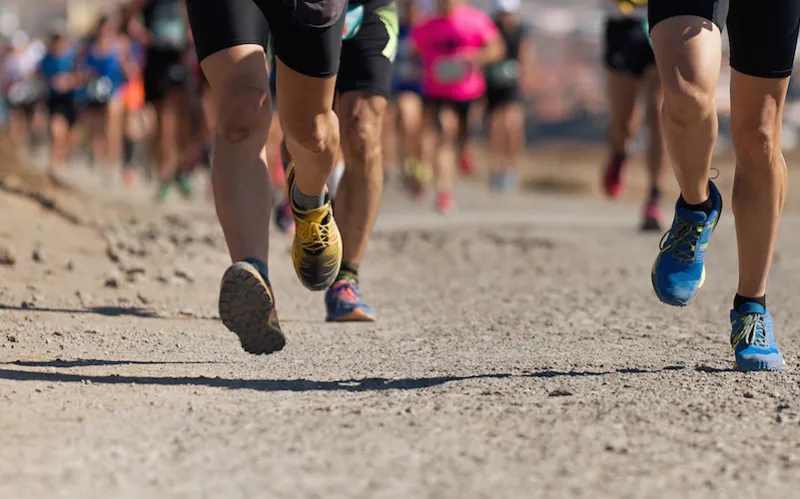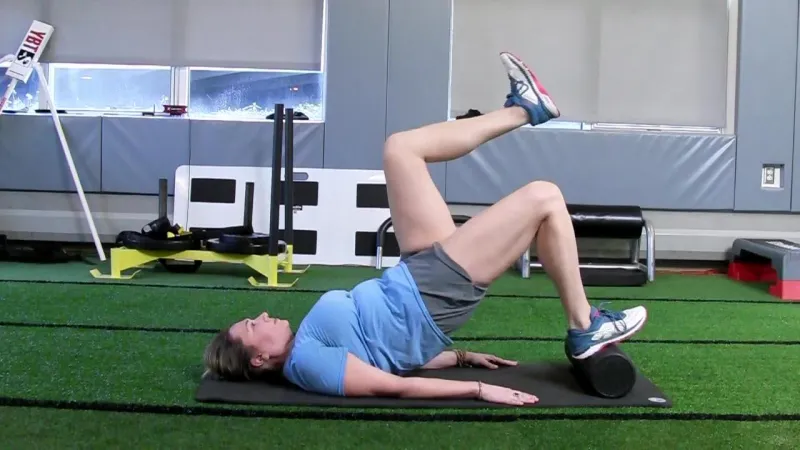What running mistakes lead to injury?
Here’s how a runner’s form, including the length of their stride and how they land on their feet, can make injury more or less likely.
Many running injuries are related to overuse, improper running form, or both. Common injuries include:
A series of simple prevention strategies can help keep runners on track and injury free.
First-time distance runners and those who struggle with repeat injuries should consider undergoing a running gait analysis and re-training. This can help identify movement patterns that increase the chance of injury. For instance, overstriding — landing with the foot in front of the knee over thousands of steps — can lead to shin, knee, and hip injuries.

Here’s how a runner’s form, including the length of their stride and how they land on their feet, can make injury more or less likely.
If you’ve set a goal of a longer run, follow a progressive program that gradually builds up to greater distances with some interval training. A coach or physical trainer can help you develop one. The program should include one day of cross-training, such as cycling or swimming.
Strength training should focus on core strength with attention to the muscles in the upper leg as well as upper body posture. Gluteal muscle strength training may help prevent IT band injuries, while calf and foot strengthening are recommended to keep your Achilles tendon in good condition.

These exercises help build strength and stability in your key running muscles.
Flexibility requirements vary from individual to individual. However, many runners have especially tight hamstrings, hip flexors, and Achilles tendons. Building flexibility in these areas may help reduce injury risk.
If you feel pain during a run, stop and stretch. You may be able fend off injuries such as iliotibial band syndrome or Achilles tendinitis.
If you’re injured, avoid pounding the pavement, even if you’re signed up for a big event. Instead, stay fit with biking, swimming, or using an elliptical. When you’re strong enough to return to the road, run at a slower pace for a few days.
Persistent, focal pain may indicate a stress fracture. If you experience pain beyond usual soreness anywhere in your feet, legs, or hips, immediately make an appointment with your health care provider.
Schedule a visit with your health care provider before starting a running training program. Be sure to tell them about any nutritional supplements you use. If you ever experience shortness of breath, dizziness, or chest pain during exercise or exertion, be sure to have it checked out by a physician.
Carbohydrates are important — both before and after long runs — to restore the glycogen lost during the long run. Chocolate milk makes an excellent recovery drink. It replaces lost fluid and has plentiful protein and carbohydrates that restore tired muscles.
Hydration is key to injury prevention. Being well hydrated helps your body cool itself, maintain good blood flow throughout your body, and clear away byproducts of high-intensity exercise.
Dehydration and overhydration symptoms can be confusing. Both can cause headaches and nausea. Once you are freely urinating, overhydration is less of an issue, and runners can replenish with carbohydrate-rich fluids and possibly protein-rich drinks such as chocolate milk.
In the first few days after a race or long run, keep your muscles moving with a few short, easy runs or bike rides. But don’t overdo it — be careful to give yourself enough recovery time before returning to a full training regimen.
Hyperthermia (heat stroke) can affect runners even on mildly warm days. Many runners think that hydration is the key to avoiding heat stroke on a hot day. While it’s important to remain hydrated, overhydration is unnecessary and may be very dangerous. On warm days, running at a slower pace is the safest way to avoid hyperthermia and overhydration.
Layering is the ideal way to train on cold days. Wear garments that breathe well and wick away sweat close to your skin.
Running in the rain can be safe as long as you have the right equipment. Wear a waterproof head cover and moisture-wicking clothes. Reflective gear will make it easier for cars to see you, and shoes with good traction help prevent slips and falls. Don’t go out in thunderstorms, heavy rain, or high winds.
As the largest and most experienced pediatric and young adult sports medicine practice in the country, the Sports Medicine Division at Boston Children's combines personalized care with innovative treatment for each athlete we treat.
Our Sports Medicine team consists of sports medicine physicians, orthopedic surgeons, physical therapists, podiatrists, athletic trainers, sports psychologists, dietitians, and many others who collaborate in every aspect of our patients’ care and their recovery.
Our Injured Runners Clinic is a partnership between Boston Children’s Sports Medicine Division and The Micheli Center for Sports Injury Prevention. Our clinicians and injury prevention specialists conduct a thorough physical and running gait evaluation for each patient to understand what factors contribute to their injury and how to correct them. We use cutting-edge technology, such as multiplanar video and force-plate treadmill analysis (a measurement of the impact of a runner’s foot against the ground), to gain a detailed understanding of the runner’s gait and possible problem areas.
The Micheli Center, part of the Sports Medicine Division, is dedicated to the prevention of sports injuries. Through research and clinical training, we offer practical strategies that help young athletes reduce their risk of injury while enhancing their sports performance. Our rehabilitation and strength training programs help injured athletes return to play stronger and healthier.
Whether injury prevention or recovery is your goal, we have the skills and dedication to help your child remain active in the sports they love.